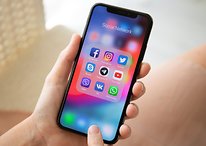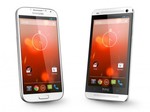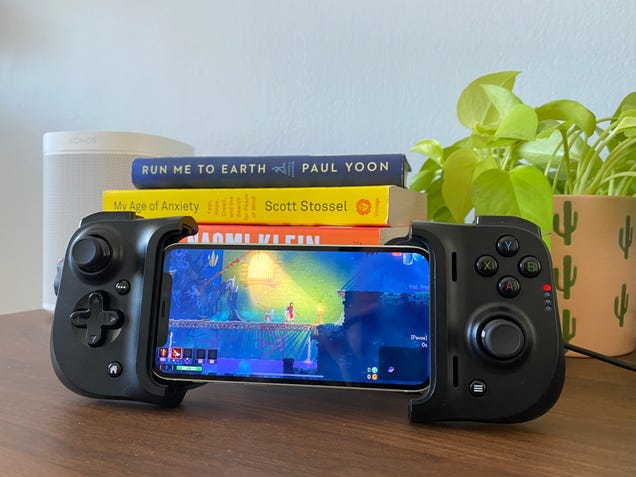Ask yourself these questions before buying an unlocked phone - Android
We’re big fans of buying unlocked phones around here. If for no other reasons, it gives us flexibility and choice. We’ve never been all that excited about signing long-term contracts or exclusive carrier deals.
Other factors that might make buying an unlocked phone seem interesting include price, preloaded software, support, and freedom. That is, freedom to move to a different service provider without breaking a contract or having to buy a new device.
While most US consumers are content to purchase their handsets directly from a wireless carrier, an increasing number of buyers are opting for other routes. That is, they buy the phone directly from the manufacturer, often in an unlocked manner.
If you’ve never considered buying an unlocked phone, it’s time you did. But, before simply going out and blindly picking up the first handset you encounter, do a bit of homework. Ask yourself a few questions and consider your needs.
We’ve put together a few rhetorical questions to keep in mind. Answering these might help you to find a phone that you love instead of one you simply like.
Will the unlocked phone work with my current carrier?
The first question you should ask yourself is whether the new phone will work with your current wireless provider. While Verizon uses a CDMA network, AT&T and T-Mobile utilize GSM technology. This is a big distinction and can make or break your phone experience.
Opting for an unlocked GSM phone is pretty safe in the US as nearly all of what you’ll encounter will work. Not only for AT&T and T-Mobile, mind you, but their respective prepaid and MVNO brands, too.
You’ll need to look more closely at unlocked models if you’re in the hunt to use one on Verizon. Specifically, you’ll have to ensure it’s “universally unlocked” or “globally unlocked”. Some phone makers will draw attention to the fact that its devices will work with all wireless networks.
Will the unlocked phone work with other carriers?
This question might not be as important to you at the outset, but it could be a factor in the longer term. Should you ever decide to switch carriers, you’ll want to know whether your phone will work with the new one.
Having an unlocked phone can change your perspective as it relates to services. With no contract or obligation to pay off the phone through your provider, there’s nothing that keeps you tied to it.
Again, GSM is flexible stuff and shouldn’t be a problem. CDMA, on the other hand, is a different animal. It’s pretty easy to check whether your phone will work elsewhere; look on the box, in the user manual, or online for network bands.
How big of a phone do I want?
Having a massive screen that approaches 7-inches can be awesome stuff, if that’s what you want. Then again, there are plenty of people who don’t need, or even want, that big of a screen.
Keep in mind that today’s phones are different from those of a few year’s back. Devices with screens larger than six inches are often smaller in physical stature than older models with five inch displays.
Bezels are thinner, physical buttons are gone, and aspect ratios have changed to make phones easier to use with one hand. That doesn’t necessarily mean lighter handsets.
What feels thin and sleek in the store might be cumbersome and heavy a week or two down the road. Once you put a case on your phone you might find it’s bulky and hard to use.
Do I care about software updates?
As much as we’d like to think otherwise, many consumers don’t know what software powers their phone. It’s not just versions of Android, either; we suspect plenty of our friends and family don’t even know what “Android” means.
If you’re not one of those people who absolutely need to have the most recent version of Android on your phone, you are in luck. Most of what’s offered in the mobile space tends to be a generation behind Google’s annual software releases.
Android’s UI has evened out and become more cohesive in recent years. At the same time, phone makers have figured out a way to be helpful without getting overly complicated. To that and, you can afford to be a step or two behind without feeling like you’re missing out.
Yes, there are still many new tweaks and enhancements that come with each iteration of Android but it’s not as obvious to many users. If you don’t know the names of each build of Android, or know what version numbers they are, you probably don’t care about the little details.
As we approach spring 2021 Android 11 is installed on nearly all new devices. If you can get a phone with Android 10, you’re still doing well for yourself. Avoid anything older than Android 9 if you can.
If you’re buying based on price, and want to keep things as cheap as possible, understand that you might not see another software release. It’s more or less “what you get today is what you’ll have tomorrow.”
How important is performance in my phone?
Think about what you do with your phone on a daily basis. Are there any limitations in what you can do or would like to do? How old is that phone?
As much as we might think we need the latest and best hardware, the truth is most people rarely demand much from their devices. It’s the same reason your friend bought last year’s flagship when the new one went on sale this year. They’d rather save a few bucks and sleep easy knowing it’s still more than sufficient for their needs.
One area where unlocked phones really shine is choice. There’s plenty to choose from at all price points, and you can often get away with something in the mid-range.
If all you care about is social media, email, messaging, and web browsing, you don’t need anything special at all. To that end, you could probably get away with something on the lower end, especially if your current phone is more than a few years old.
How much do I care about taking pictures with my phone?
There’s no better camera than the one in your pocket, so make sure you’re happy with it.
Yes, we all take pictures with our phones. While some like to snap photos of food or loved ones, others can be found shooting a bunch of selfies and group shots.
What are you doing with your photos after taking them? Are they being shared on social media and viewed largely on mobile devices? Do you print them out or use them for galleries on a smart display or TV?
If a lot of what you do with pictures centers around viewing and sharing on the phone, you might not care too much about the overall quality. Any of today’s mid-to-high end cameras will suffice.
Where things get really fun and interesting is in the area of AI and multiple lenses. The upper end of phones can produce some incredible widescreen, ultra-wide, telephoto, and portrait pictures. If you care about the finer aspects in photography, you owe it to yourself to consider splurging on a phone with a highly rated camera.
How much do I want to spend on my unlocked phone?
This question isn’t exclusive to unlocked devices; we think about cost with all of our purchases. To that end, you may have to consider this one a little more if you’re buying a handset outright.
Carriers do a great job of tying customers up for an 18-24 month installment plan. And, if you’re switching from one provider to another, trading in old phones, and/or signing up multiple lines, it’s hard to beat some of the promotions.
Buying unlocked, or direct from a manufacturer, can sometimes give consumers a bit of sticker shock. The cost of a flagship experience can fetch upwards of a $1,000 or more. It’s not always possible to spread payments out over a few years, especially if your credit is not great.
There’s something to be said about getting as much as you can when buying a phone. Consumers are programmed to think that you get what you pay for and we need to open our wallets as wide as possible. That’s hardly the case.
Believe it or not, there’s a lot of phone to be had at the $300 price range, sometimes even as low as $200. The Pixel 4a is proof that you don’t have to spend more than $350 to get a big screen device with a great camera.
On the other hand, if you understand what comes with today’s best phones, and plan to take advantage of the tech, look to flagships. The desktop-like software experience, AI, cameras, and benchmark-smashing hardware is truly compelling when harnessed.
19/02/2021 12:00 AM
Free Android and iOS apps of the week
19/02/2021 04:40 PM
Audials Play App Review
19/02/2021 03:00 PM
Cheap cell phone plans that use the Verizon network
19/02/2021 10:00 PM
EOZ Arc wireless headphones review
19/02/2021 09:00 PM
Verizon’s Galaxy S8 is getting an update some four years after it launched
19/02/2021 03:01 PM
[Deal] Save $20 on RAVPower’s AC750 FileHub with Wireless Travel Router
19/02/2021 05:34 PM
The Razer Kishi Is a Godsend for Cloud Gaming, at Least Where It’s Supported
19/02/2021 10:00 PM
Tips for buying a used phone
19/02/2021 06:00 PM
- Comics
- HEALTH
- Libraries & Demo
- Sports Games
- Racing
- Cards & Casino
- Media & Video
- Photography
- Transportation
- Arcade & Action
- Brain & Puzzle
- Social
- Communication
- Casual
- Personalization
- Tools
- Medical
- Weather
- Shopping
- Health & Fitness
- Productivity
- Books & Reference
- Finance
- Entertainment
- Business
- Sports
- Music & Audio
- News & Magazines
- Education
- Lifestyle
- Travel & Local





![[Deal] Save $20 on RAVPower’s AC750 FileHub with Wireless Travel Router](http://www.android.co.rs/data/newsimages/googleandroidphone7.jpg)

